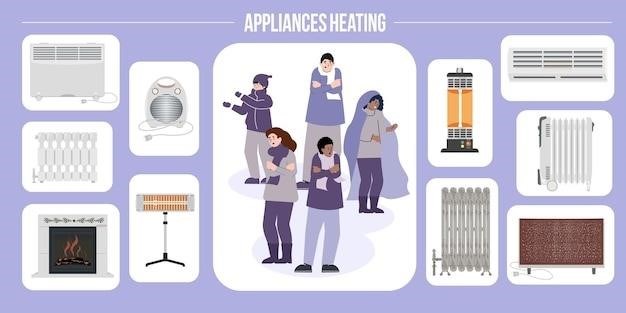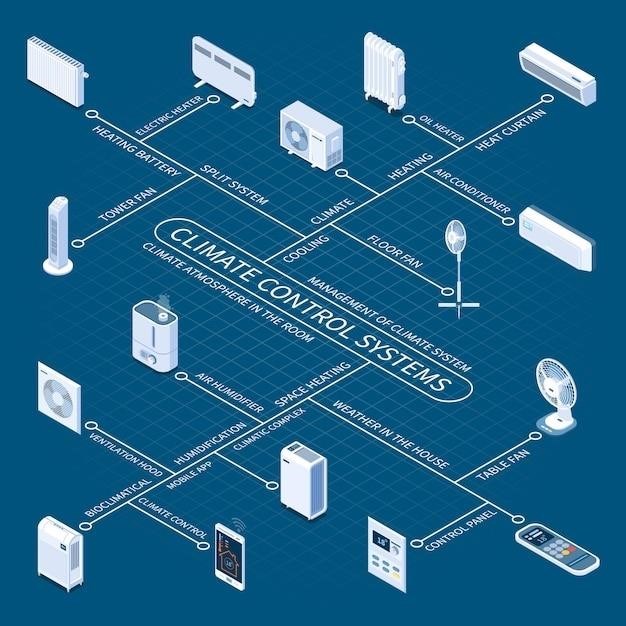Fujitsu Air Conditioner Operating Manual⁚ A Comprehensive Guide
This comprehensive guide provides detailed instructions on installing, operating, and maintaining your Fujitsu air conditioner. It covers all aspects of your unit, from safety precautions to troubleshooting, ensuring you have the information you need for optimal performance and longevity.
Introduction
Welcome to the world of Fujitsu air conditioning, where comfort and efficiency meet. This operating manual serves as your comprehensive guide to understanding and maximizing the capabilities of your Fujitsu air conditioner. It is designed to be user-friendly and provide clear instructions for every aspect of your unit’s operation, from installation to maintenance.
Whether you are a first-time user or a seasoned homeowner, this manual will equip you with the knowledge needed to enjoy the optimal performance and benefits of your Fujitsu air conditioner. We encourage you to read through it carefully to familiarize yourself with its features, functionalities, and best practices. Your comfort and satisfaction are our top priorities.
Safety Precautions
Your safety and the well-being of others are paramount. Please read and understand the following safety precautions before installing or operating your Fujitsu air conditioner. Failure to comply with these instructions may result in personal injury, property damage, or malfunction of the unit.
Always disconnect the power supply before performing any maintenance or cleaning tasks. Never attempt to repair the air conditioner yourself. Contact a qualified technician for any repairs or servicing. Avoid using damaged or frayed power cords. Ensure the air conditioner is installed in a well-ventilated area, away from flammable materials. Do not block the intake or exhaust vents. Keep children away from the air conditioner and its controls.
Follow all local electrical codes and regulations when installing the unit. Never use the air conditioner for purposes other than those described in this manual.
Installation
Proper installation of your Fujitsu air conditioner is crucial for optimal performance, energy efficiency, and safety. This section provides a general overview of the installation process. For detailed instructions, refer to the specific installation manual provided with your unit.
Before starting the installation, ensure you have all the necessary tools and materials, including a power supply, a special branch circuit, a dedicated switch and receptacle, and proper piping and cables. Consult a qualified technician or installer to carry out the installation process. They will ensure that the unit is properly secured, connected to the power supply, and the refrigerant lines are installed correctly.
Ensure the installation complies with all local building codes and regulations. The maximum length of the piping is 66 ft (20 m) and the maximum height difference between the indoor and outdoor units should be adhered to. After the installation, the technician will perform a system check and explain the operation to you.

Operation
Operating your Fujitsu air conditioner is straightforward and user-friendly. The remote control provides easy access to various functions, allowing you to customize the settings to meet your comfort preferences. Familiarize yourself with the remote control’s buttons and their corresponding functions. The manual provides a detailed explanation of each button and its operation.
Before turning on your air conditioner, ensure the power supply is connected and the circuit breaker is switched on. To start the unit, simply press the “ON” button on the remote control. The air conditioner will automatically start cooling or heating the room, depending on the selected mode.
While operating the air conditioner, it’s important to be mindful of the following⁚ avoid placing objects in front of the air intake or outlet, as this can restrict airflow and reduce efficiency. Regularly clean the air filters to maintain optimal performance and prevent dust buildup.
Remote Control
The remote control is your primary interface for controlling your Fujitsu air conditioner. It offers various functions, allowing you to adjust settings like temperature, fan speed, and operating mode. The remote control is typically equipped with a display screen that shows the current settings and operational status of the air conditioner.
Most Fujitsu remote controls feature buttons for power on/off, mode selection (cooling, heating, fan, dry), temperature adjustment, fan speed control, timer settings, and other advanced functions. The remote control also includes an indicator light that illuminates when the air conditioner is operating.
To ensure proper operation, it’s essential to replace the batteries in the remote control when they become depleted. The manual provides instructions for battery replacement and disposal.
Operating Modes
Fujitsu air conditioners offer multiple operating modes to cater to various needs and preferences. The most common modes include⁚
- Cool⁚ This mode is designed for cooling the room. It operates by circulating cool air to lower the room temperature.
- Heat⁚ This mode is used for heating the room. It utilizes a reverse cycle system to extract heat from the outside air and distribute it indoors.
- Fan⁚ This mode circulates air without cooling or heating. It’s ideal for moving air around the room without changing the temperature;
- Dry⁚ This mode dehumidifies the air, removing excess moisture. It is particularly helpful in humid climates.
- Auto⁚ This mode automatically adjusts the temperature and fan speed based on the room’s conditions. It provides a comfortable temperature without manual adjustments.
The specific operating modes available may vary depending on the model of your Fujitsu air conditioner. Refer to your operating manual for a complete list of modes and their descriptions.
Temperature Control
Fujitsu air conditioners provide precise temperature control for your comfort. You can easily adjust the desired temperature using the remote control. The temperature range typically varies from 16°C to 30°C (60°F to 86°F).
The remote control features a clear display showing the current temperature and allows you to set your preferred temperature with the up and down arrows. The unit will then work to maintain the set temperature, automatically adjusting fan speed and cooling/heating output as needed.
Some Fujitsu models may include additional features like an “Economy” mode, which helps to save energy by setting a slightly higher or lower temperature than your preferred setting. Refer to your operating manual for specific information on temperature control features available for your model.
Air Flow Control
Fujitsu air conditioners offer various ways to control the airflow direction and intensity to suit your preferences and room layout.
Using the remote control, you can adjust the vertical and horizontal louver positions. This allows you to direct the airflow up, down, left, or right, targeting specific areas of the room for optimal comfort. Some models might feature a “Swing” mode that automatically moves the louvers to distribute cool air more evenly.

The fan speed can also be adjusted to control the intensity of airflow. You can choose from multiple settings, typically ranging from low to high. A low fan speed provides a gentle breeze, while a high setting offers a stronger airflow for quicker cooling or heating. The optimal fan speed choice depends on your personal preference and the desired level of cooling or heating.
Timer Function
The timer function on your Fujitsu air conditioner allows you to schedule your unit’s operation to suit your daily routine and energy-saving goals. You can program the unit to start or stop at specific times, ensuring optimal comfort and energy efficiency.
Using the remote control, you can set both an on-timer and an off-timer. The on-timer allows you to pre-program the air conditioner to turn on before you return home, providing a comfortable temperature upon arrival. The off-timer lets you schedule the unit to turn off automatically after a set period, preventing unnecessary energy consumption when not needed.
The timer function is particularly useful for maximizing comfort and energy efficiency. You can set the timer to turn on the air conditioner in the morning before you wake up, or to turn off the unit before you leave for work or bed, ensuring a comfortable temperature without wasting energy.
Maintenance
Regular maintenance is crucial for ensuring optimal performance and longevity of your Fujitsu air conditioner. By following these simple steps, you can keep your unit running smoothly and efficiently for years to come.
Clean the air filter regularly, at least once a month. A dirty filter restricts airflow, reducing efficiency and potentially damaging the unit. Remove the filter, gently vacuum it with a soft brush attachment, and then wash it with mild detergent and water. Allow the filter to dry completely before reinstalling it.
Inspect the indoor and outdoor units for any signs of dirt, debris, or obstruction. Remove any blockages or debris to ensure proper airflow and prevent damage to the unit; Check the drain hose for clogs and ensure it is properly connected and draining effectively. Regularly inspect the refrigerant lines for leaks, and contact a qualified technician if you suspect any issues.
Contact a qualified technician for any major repairs or servicing. Avoid attempting to repair the unit yourself, as this may void the warranty and potentially damage the unit. Regular maintenance and professional servicing will help extend the life of your air conditioner and keep it running smoothly for years to come.
Troubleshooting
While your Fujitsu air conditioner is designed for reliable operation, occasional issues may arise. This section provides guidance on common problems and solutions, helping you resolve minor issues without requiring professional intervention. However, for complex or persistent problems, always contact a qualified technician.
If your air conditioner isn’t cooling properly, check the air filter for dirt or obstruction. Ensure the indoor and outdoor units are clear of any debris blocking airflow. Verify that the thermostat is set to the desired temperature and is functioning correctly. If the unit is making unusual noises, check for loose parts or obstructions in the fan blades.
If the air conditioner is not turning on, make sure the power supply is connected and working properly. Check the circuit breaker or fuse to ensure it hasn’t tripped. Also, inspect the remote control for battery issues. If the unit is displaying error codes, refer to the troubleshooting section in the user manual for specific solutions. Remember that attempting to repair complex issues yourself can be dangerous and may void your warranty. Always contact a qualified technician for any major repairs or servicing.
Technical Specifications
This section provides detailed technical information about your Fujitsu air conditioner, including essential specifications and features. It helps you understand the capabilities of your unit and ensures compatibility with your home’s electrical system. This information is crucial for proper installation, maintenance, and troubleshooting. Refer to the specific model’s user manual for complete technical specifications.
Key specifications typically include⁚ cooling capacity (BTU/h), heating capacity (BTU/h), energy efficiency rating (SEER/HSPF), power consumption (watts), refrigerant type, noise levels (decibels), dimensions (indoor and outdoor units), weight, and operating temperature range. Understanding these specifications helps you make informed decisions about your air conditioner, ensuring it meets your specific needs and provides optimal comfort and energy efficiency.
For detailed information on specific models, refer to the Fujitsu General website or contact a qualified technician. This information helps ensure a smooth installation and efficient operation of your Fujitsu air conditioner, maximizing its performance and extending its lifespan.
